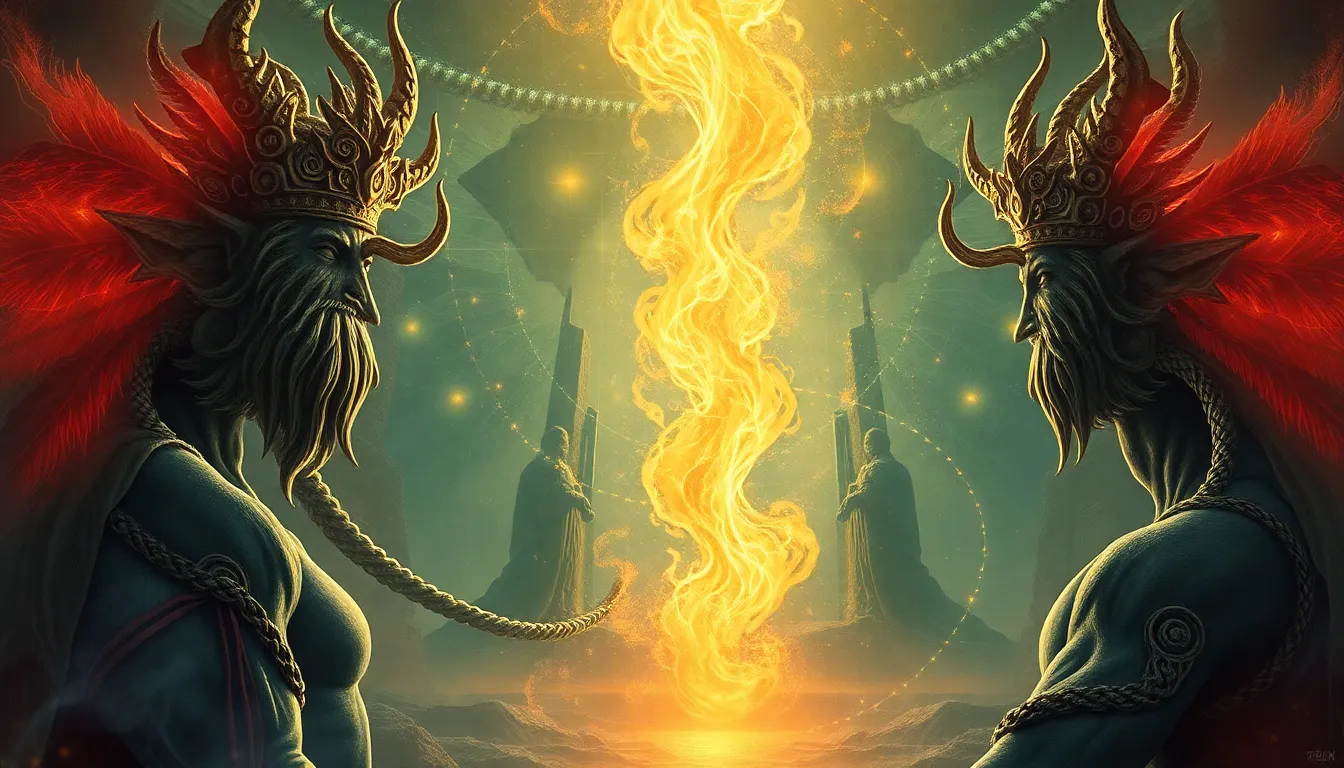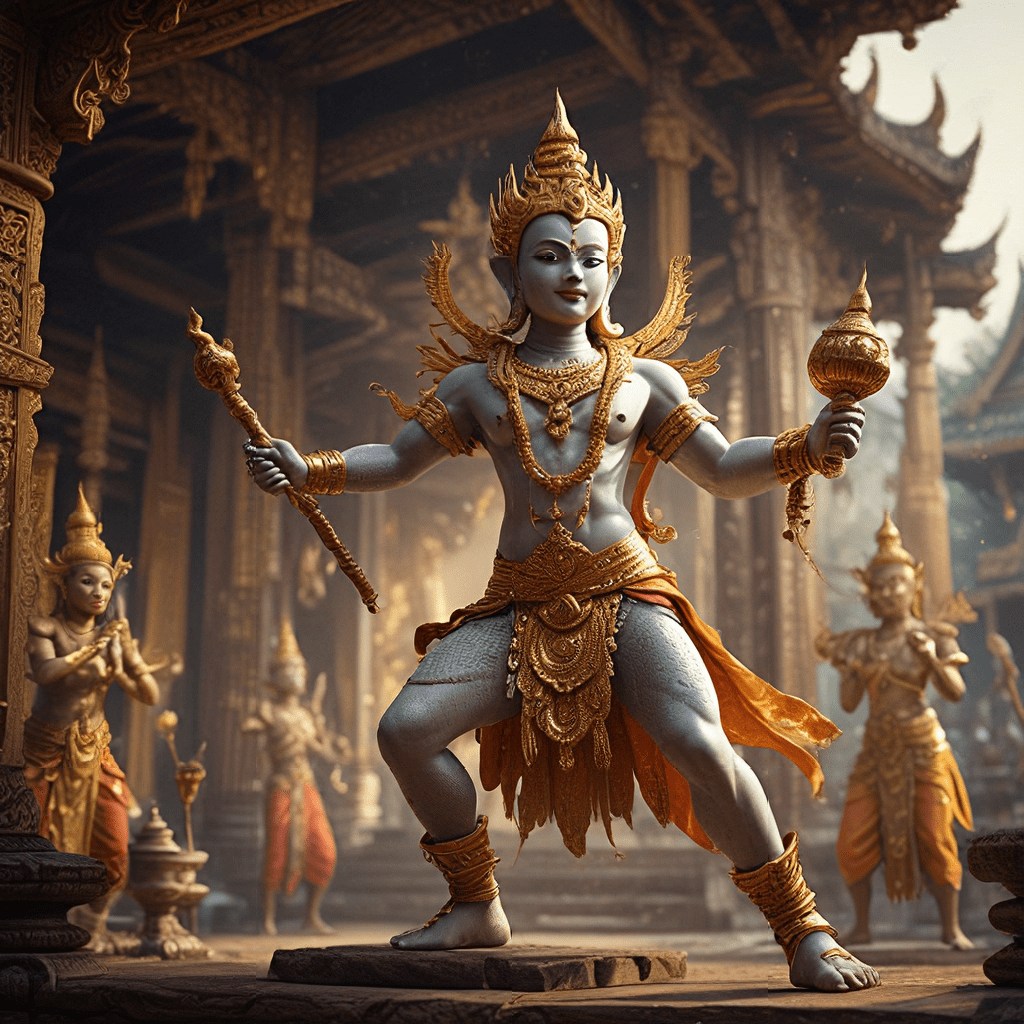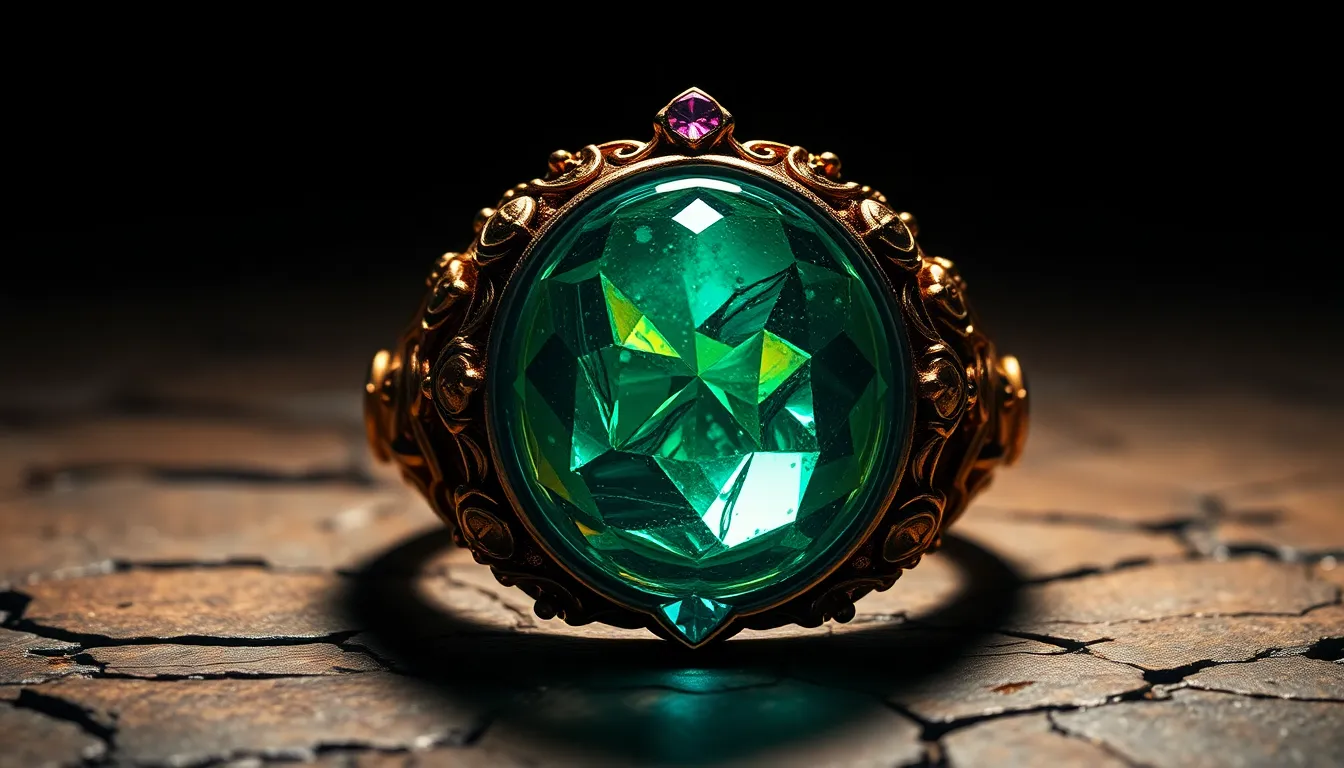The Most Enigmatic Ancient Deities and Their Mystical Powers
Introduction: The Allure of Ancient Deities
Throughout human history, ancient religions and belief systems have played a profound role in shaping cultures, societies, and individual identities. Deities, as central figures in these belief systems, have been revered, feared, and worshipped, embodying the mysteries of existence and the natural world. They serve as representations of fundamental human experiences, from creation to destruction, love to war, life to death.
This exploration delves into some of the most enigmatic ancient deities, whose mystical powers and complex narratives continue to intrigue scholars and enthusiasts alike. By examining these figures, we can gain insight into the values, fears, and aspirations of ancient civilizations, as well as the universal themes that resonate through time.
Understanding Enigmatic Deities: Definitions and Characteristics
An enigmatic deity is often characterized by their complex, multifaceted nature, which can embody both benevolent and malevolent traits. These deities are shrouded in mystery, often representing concepts that are difficult to comprehend, such as the afterlife, fate, and the duality of existence.
Common traits and themes among these deities include:
- Duality: Many enigmatic deities possess a dual nature, symbolizing both creation and destruction, life and death.
- Mystery: They are often associated with the unknown, invoking a sense of awe and reverence among their worshippers.
- Transformation: Their myths frequently involve themes of change and evolution, reflecting the cyclical nature of existence.
The role of mystery in worship is paramount, as it often fosters a deeper connection and engagement with the divine, encouraging followers to seek understanding through ritual, prayer, and contemplation.
The Egyptian Pantheon: Osiris and His Underworld Mystique
Osiris, one of the most significant deities in ancient Egyptian mythology, is revered as the god of resurrection and the afterlife. His narrative is rich with themes of death, rebirth, and the eternal cycle of life.
Symbolically, Osiris is often depicted as a green-skinned figure, representing fertility and rebirth. He is associated with the agricultural cycle, particularly the flooding of the Nile, which was crucial for sustaining life in ancient Egypt. The rituals surrounding Osiris focused on death and resurrection, including the famous Osiris myth, where he is murdered by his brother Set and later resurrected by his wife, Isis.
The significance of the Osiris myth in ancient Egyptian culture cannot be overstated. It provided a framework for understanding the afterlife, emphasizing the beliefs in judgment, resurrection, and the importance of living a righteous life. The annual Osiris festivals were a testament to the enduring power of his narrative, symbolizing hope and continuity.
The Greek Enigma: Hecate and Her Triple Nature
Hecate, a prominent figure in Greek mythology, is often regarded as the goddess of magic, witchcraft, and the moon. Her enigmatic nature is reflected in her triadic form, which symbolizes her dominion over various realms.
Often associated with crossroads, Hecate embodies the choices and transitions of life. She is depicted as a triple goddess, representing the maiden, mother, and crone archetypes, which highlight the cyclical nature of life and the passage of time.
The duality of Hecate’s nature is striking; she is both a protector and a harbinger of doom. While she guides souls through transitions and offers protection to witches, her association with the darker aspects of magic and the night reflects the fear and reverence she inspires among her followers.
Norse Mythology: Hel and the Realm of the Dead
In Norse mythology, Hel is the enigmatic ruler of the underworld, a realm where those who did not die a heroic death reside. Her portrayal is complex and often ambiguous, reflecting the Norse understanding of life and death.
Hel’s nature is characterized by her half-living, half-dead appearance, symbolizing the thin boundary between life and death. As a goddess, she embodies the inevitability of mortality and the acceptance of death as a natural part of existence.
Cultural interpretations of the afterlife in Norse mythology emphasize honor and valor. The concept of Valhalla, a majestic hall for slain warriors, stands in contrast to Hel’s realm, highlighting the Norse belief in the valorization of death in battle. Hel’s domain serves as a reminder of the consequences of one’s choices in life.
The Mesopotamian Enigma: Inanna and the Descent to the Underworld
Inanna, the Sumerian goddess of love, war, and fertility, presents a fascinating narrative with her journey to the underworld. This descent is not just a physical journey but also an exploration of power dynamics, sexuality, and transformation.
Inanna’s story reveals the complexities of her character, as she bravely confronts her sister, Ereshkigal, the queen of the underworld. Her journey symbolizes the themes of death and rebirth, as she is stripped of her powers and must undergo a transformation to return to the surface world.
The implications of her myth extend beyond individual transformation; they touch on broader themes of power, the duality of human experience, and the cyclical nature of life and death. Inanna’s descent serves as a powerful reminder of the interconnection between love, war, and the quest for identity.
The Indian Subcontinent: Kali and Her Fearsome Powers
Kali, a fierce goddess in Hindu mythology, embodies the paradox of destruction and creation. She is often depicted with a dark complexion, wild hair, and a necklace of skulls, symbolizing the duality of fear and reverence.
Kali’s symbolism is intricately linked to time, life cycles, and liberation. As the goddess of time, she reminds devotees of the impermanence of life and the necessity of embracing change. Her fearsome appearance belies her role as a protector of the weak and a destroyer of evil.
The duality of fear and reverence in Kali’s worship is evident in various rituals and practices. Devotees approach her with both trepidation and devotion, recognizing her as a source of empowerment and transformation.
Celtic Mysticism: The Danu and the Nature of Creation
Danu, a mother goddess in Celtic mythology, represents fertility, wisdom, and the earth. She is often associated with the Tuatha Dé Danann, a mythological race that embodies the spirit of the land and its natural forces.
The examination of Danu’s character reveals her significance in Celtic spirituality. She symbolizes the nurturing aspect of nature, embodying the interconnectedness of life and the land. Her attributes highlight the reverence that ancient Celts held for the earth and its cycles.
In Celtic mythology, the importance of nature and land is paramount, as it serves as a foundation for understanding existence. Danu’s presence reflects the deep connection between the people and their environment, emphasizing the belief in the sacredness of the natural world.
The Influence of Enigmatic Deities in Modern Culture
The influence of enigmatic deities continues to resonate in modern culture and spirituality. Their stories are retold in literature, art, and popular media, often serving as archetypal figures that explore the complexities of human experience.
As society grapples with existential questions and the mysteries of life, these ancient deities offer valuable insights into the nature of existence. They remind us of the enduring power of mythology and its ability to connect us to our shared human heritage.



